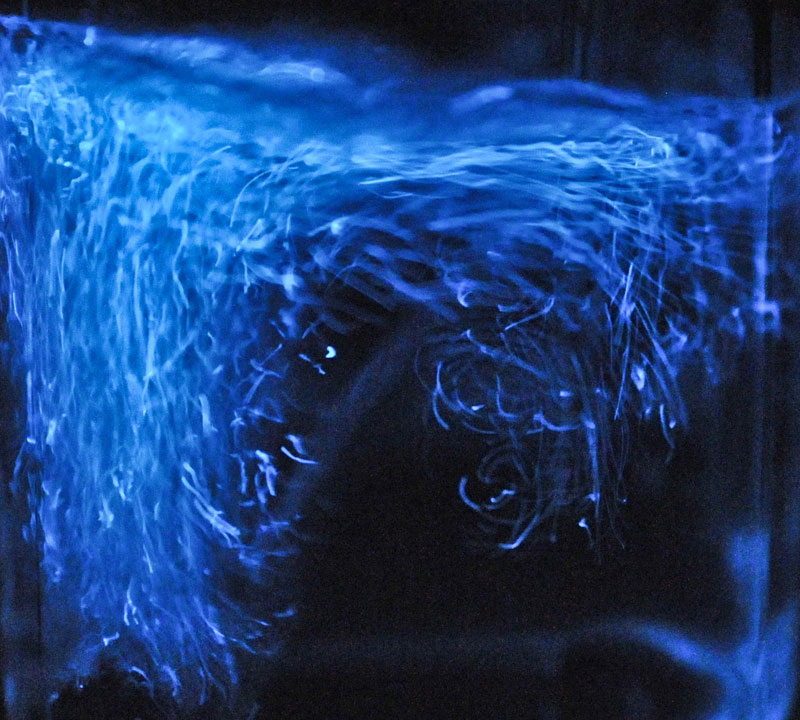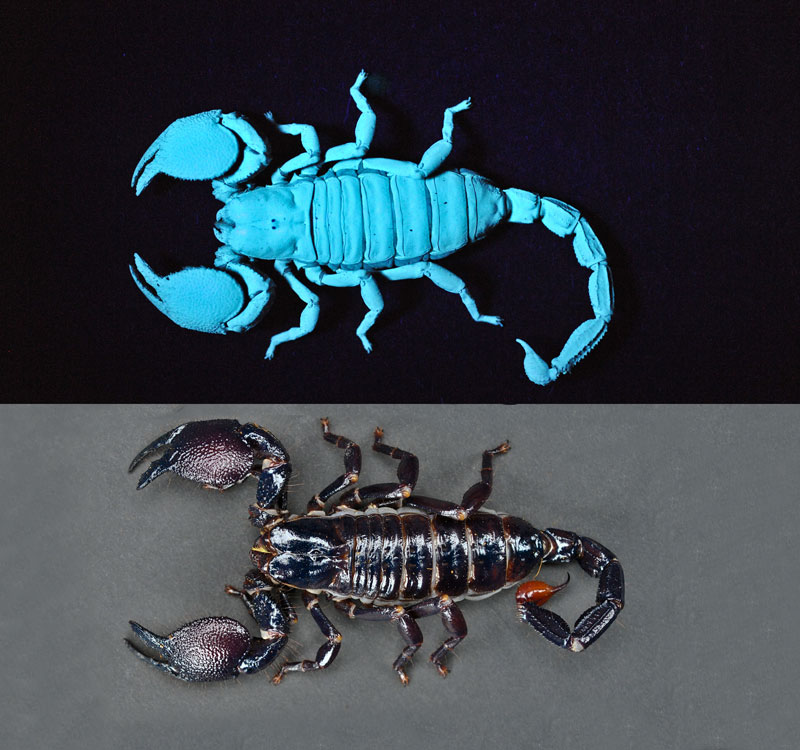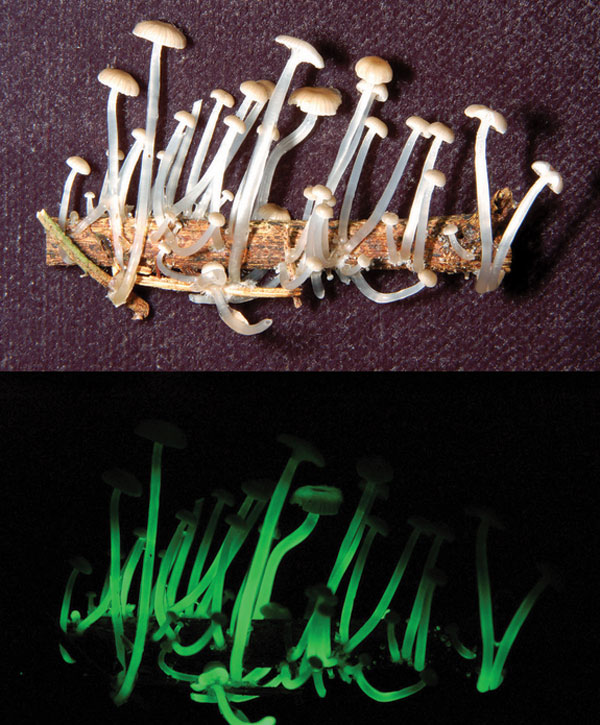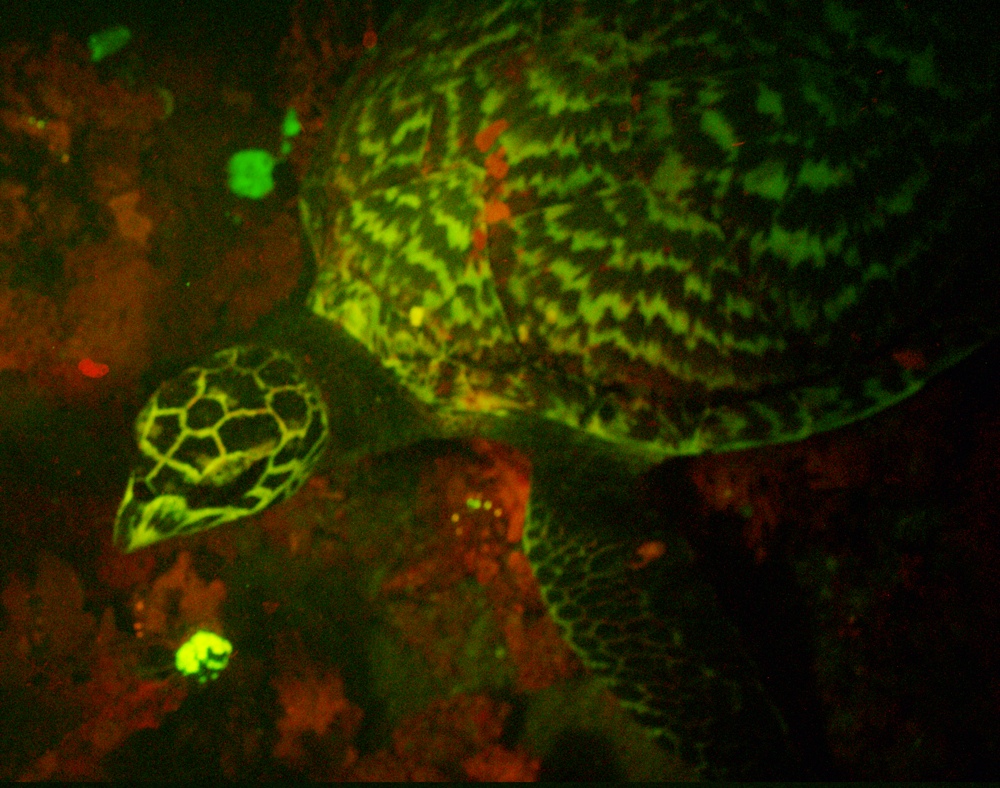Bioluminescent: A Glow-in-the-Dark Gallery
Beautiful Bioluminescence

The ability to produce light via a chemical reaction has evolved over and over again in fireflies, other insects, bacteria, jellyfish, bony fish, fungi, and single-celled dinoflagellates shown above. Dinoflagellates flash when disturbed, and in high concentrations they produce the toxic red tides.
Magic Mushrooms

These bioluminescent bitter oyster mushrooms, Panellus stipticus , grow on decaying wood in the forests of eastern North America.
Blue Ghost Firefly

This model of a male blue ghost firefly, Phausis reticulate , is featured in a bioluminescence exhibit at the American Museum of Natural History. It is 65 times actual size. Found in the central and southeastern U.S., the blue ghost firefly makes light but does not flash.
Fireflies in the Forest

A camera with a slow–shutter speed captured firefly signals; fireflies emit light to signal to potential mates. This photo was taken in Okayama prefecture, Japan.
Rare on Land

Bioluminescence is easily associated with fireflies, but few bioluminescent organisms live on land. Most inhabit the deep sea.
Fluorescent Scorpions

Bioluminescence is different than fluorescence. Bioluminescent organisms produce light using a chemical reaction; fluorescent organisms or objects absorb light and emit it at a different wavelength. These scorpions fluoresce under ultraviolet light and appear blue.
Ponyfish

A male ponyfish model on display in a bioluminescence exhibit at the American Museum of Natural History. Male ponyfish attract females with a special patterns of flashing light. The source of the light is tissue around the male’s throat packed with bioluminescent bacteria. Internal structures channel the light to clear patches on the fish’s flanks, where it shines out so females can pick up the signal.
Get the world’s most fascinating discoveries delivered straight to your inbox.
Flashlight Fish

Flashlight fish house bioluminescent bacteria in an organ under their eyes and use the light produced by the bacteria to communicate, avoid predation, and to attract prey.
Eternal Light Mushrooms

This luminescent fungi was collected in São Paulo, Brazil. San Francisco State University biology professor Dennis Desjardin and his colleagues who made the discovery, named the new species Mycena luxaeterna (eternal light) after a movement in Mozart's "Requiem."
An Artificial Glow

Researches created glowing tobacco plants by transplanting genes from bioluminescent marine bacteria.
Glowing sea turtle

Divers spotted a biofluorescent turtle swimming near the Solomon Islands in the South Pacific.



